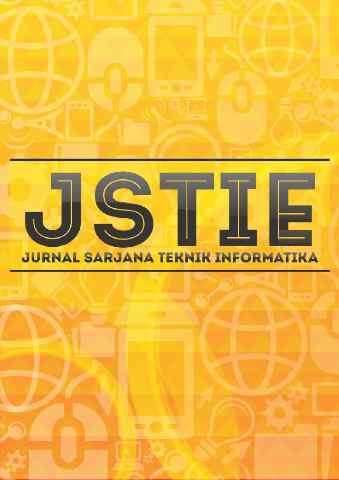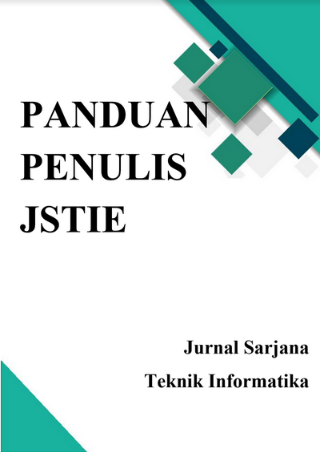Optimasi Fungsi Keanggotaan Fuzzy Mamdani Menggunakan Algoritma Genetika Untuk Penentuan Penerima Beasiswa
DOI:
https://doi.org/10.12928/jstie.v8i2.14846Keywords:
Decision Support System, Scholarships, Fuzzy Mamdani, Genetic Algorithms, Spearman CollationAbstract
Beasiswa merupakan bantuan pendidikan yang ditujukan untuk meringankan biaya pendidikan sekaligus membantu memperbaiki tingkat pendidikan bangsa. Saat ini banyak beasiswa yang ditawarkan kepada mahasiswa yang kurang mampu dan mahasiswa berprestasi. Untuk mengantisipasi agar beasiswa tersalurkan kepada yang berhak maka diperlukan suatu system mengambil keputusan yang berdasarkan pada enam kriteria utama yaitu Index Prestasis Komulatif (IPK), semester, penghasilan orang Tua, tagihan listrik, pembayaran PBB dan tanggungan orang tua. Pemanfaatan sistem pengambilan keputusan dalam menyelesaikan masalah ketidak tepatan sasaran dalam menentukan penerima beasiswa pada STMIK Surya Intan Kotabumi dengan menggunakan Metode Fuzzy Mamdani dan Metode Algoritma Genetika. Tujuan penelitian ini untuk menerapkan metode Fuzzy Mamdani dan Algoritma Genetika serta mengukur tingkat akurasi metode Fuzzy Mamdani tanpa optimasi dengan metode Fuzzy Mamdani yang teroptimasi menggunakan Algoritma Genetika berdasarkan kriteria- kriteria yang telah ditentukan. Hasil dari penggunaan kedua metode tersebut dengan membandingkan antara metode Fuzzy Mamdani tanpa optimasi sebesar 0,8801 dengan metode Fuzzy Mamdani yang teroptimasi menggunakan Algoritma Genetika sebesar 0,9172 yang diukur menggunakan kolerasi spearman sehingga disimpulkan bahwa penggunaan algoritma genetika dapat mengoptimalkan tingkat kolerasi sebesar 0,0371.References
L. A. Latif, M. Jamil, and S. H. Abbas, Sistem Pendukung Keputusan Teori dan Implementasi. Yogyakarta: Deepublish, 2018.
Wikipedia, “Beasiswa,†id.wikipedia.org, 2019. [Online]. Available: https://id.wikipedia.org/wiki/Beas iswa.
B. Hosseinzadeh, H. Zareiforoush, M. E. Adabi, and A. Motevali, “Development of a Fuzzy Model to Determine the Optimum Shear Strength of Wheat Stem,†Int. J. Comput. Sci. Telecommun., vol. 2, no. 4, pp. 56–60, 2011.
N. Siddique, “Intelligent control: a hybrid approach based on fuzzy logic, neural networks and genetic algorithms,†Springer, vol. 517, 2014.
S. Kusumadewi and H. Purnomo, Aplikasi Logika Fuzzy untuk Pendukung Keputusan. Yogyakarta: Graha Ilmu, 2010.
T. J. Ross, FUZZY LOGIC WITH ENGINEERING ENGINEERING Third Edition. New Mexico: John Wiley & Sons, Ltd, 2010.
B. D. Setiawan and Subanar, “Color pixel classification using genetic fuzzy system: Case study on earth surface classification,†2010 Int. Conf. Distrib. Fram. Multimed. Appl., pp. 1–6, 2010.
B. A. Restuputri, W. F. Mahmudy, and I. Cholissodin, “Optimasi Fungsi Keanggotaan Fuzzy Tsukamoto Dua Tahap Menggunakan Algoritma Genetika Pada Pemilihan Calon Penerima Beasiswa dan BBP-PPA ( Studi Kasus: PTIIK Universitas Brawijaya Malang ),†Repos. J. Mhs. PTIIK Univ. Brawijaya, vol. 5, no. 15, pp. 1–10, 2015.
T. Sutojo, E. Mulyanto, and V. Suhartono, Kecerdasan Buatan. Andi Offet, 2011.
Sugiyono, Metode penelitian pendidikan:(pendekatan kuantitatif, kualitatif dan R & D). Alfabeta, 2008.
Downloads
Published
Issue
Section
License
License and Copyright Agreement
In submitting the manuscript to the journal, the authors certify that:
- They are authorized by their co-authors to enter into these arrangements.
- The work described has not been formally published before, except in the form of an abstract or as part of a published lecture, review, thesis, or overlay journal. Please also carefully read Journal Posting Your Article Policy.
- The work is not under consideration for publication elsewhere.
- The work has been approved by all the author(s) and by the responsible authorities – tacitly or explicitly – of the institutes where the work has been carried out.
- They secure the right to reproduce any material that has already been published or copyrighted elsewhere.
- They agree to the following license and copyright agreement.
Copyright
Authors who publish with Jurnal Sarjana Teknik Informatika agree to the following terms:
- Authors retain copyright and grant the journal right of first publication with the work simultaneously licensed under a Creative Commons Attribution License (CC BY-SA 4.0) that allows others to share the work with an acknowledgement of the work's authorship and initial publication in this journal.
- Authors are able to enter into separate, additional contractual arrangements for the non-exclusive distribution of the journal's published version of the work (e.g., post it to an institutional repository or publish it in a book), with an acknowledgement of its initial publication in this journal.
- Authors are permitted and encouraged to post their work online (e.g., in institutional repositories or on their website) prior to and during the submission process, as it can lead to productive exchanges, as well as earlier and greater citation of published work.








